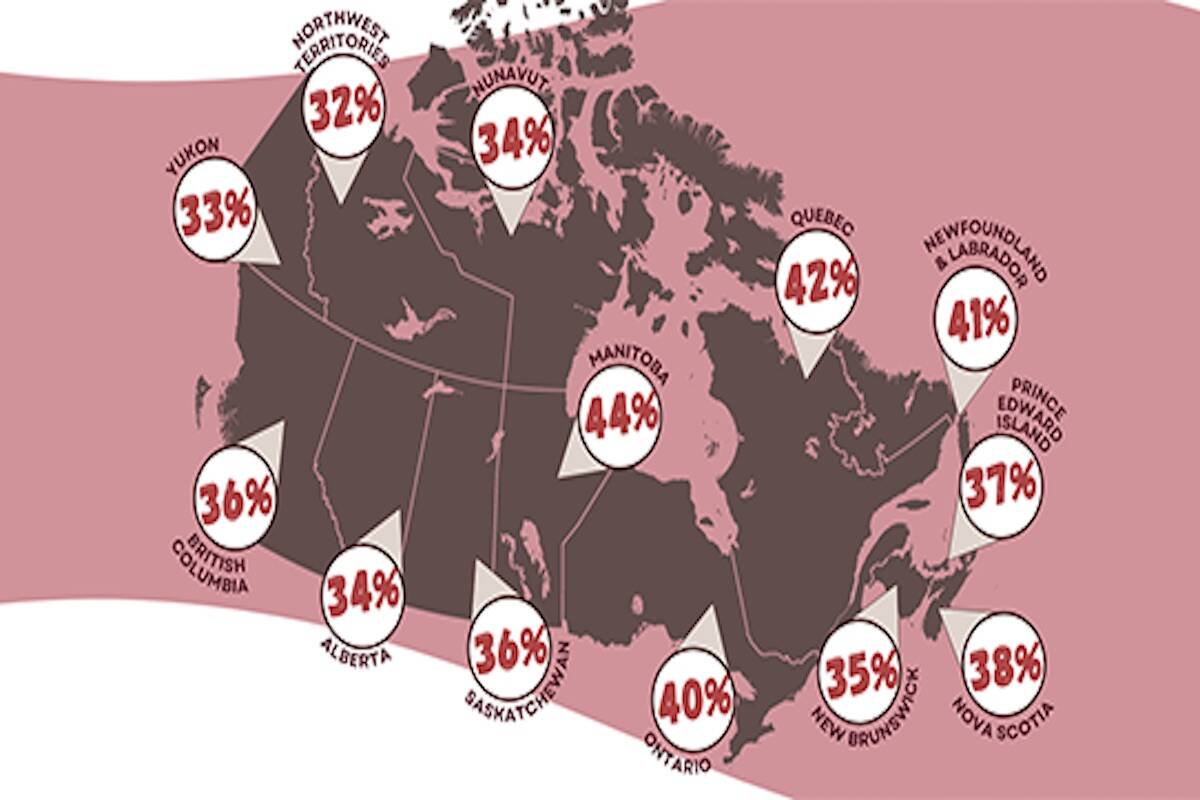Substance use groups and universities have issued updated grading of Canada’s alcohol-related regulations, which show worsening results for B.C.
The Canadian Alcohol Policy Evaluation (CAPE) project, a comprehensive evaluation and scoring of how the beverages are regulated, found B.C. garnered a failing grade of 36 per cent – putting it behind six other provinces.
Tim Naimi, the director of a University of Victoria substance use research institute who leads CAPE, said the project also offers suggestions for how governments can improve alcohol regulations to better public health.
Alcohol causes 2,600 deaths and 160,000 hospital visits annually in B.C., according to updated Canadian Substance Use Costs and Harms data.
Naimi also pointed to the large financial deficit B.C. sees from alcohol, saying that the $2 billion in revenue the government takes in is offset by $2.8 billion in alcohol-related costs dealing with health care, insurance and the criminal justice system.
“Alcohol is one of the leading preventable causes of death and social problems in Canada and British Columbia,” the physician and alcohol epidemiologist said in an interview.
“That’s why we’re all better off having good alcohol policies in place, so people can continue to enjoy alcohol if they choose to drink and so we can minimize the harms of alcohol consumption, particularly excessive drinking.”
Factoring in non-drinkers, the average B.C. resident over 15 consumes 528 drinks a year – topping the Canada average of 487. Policies that deal with the direct price or availability of drinks make the biggest difference in public health, Naimi said.
CAPE’s grading system looks at 11 domains, with some weighted higher due to their effectiveness and reach of reducing alcohol-related harms. Those domains include taxes, operation hours for bars and other establishments, advertising restrictions and more.
B.C.’s 36 per cent was worse than its previous CAPE scoring and Naimi notes part of that trend is due to slight changes in the scoring system, but also because the province loosened restrictions on the availability of alcohol in recent years.
“Never has it been so easy to get alcohol in so many different ways, from so many different places, at so many hours of the day and night.”
One change Naimi wants to see is mandatory labelling as he contrasted the lack of that with how even a can of peas includes what a serving is and how many are inside.
“Even if somebody said ‘Okay I want to reduce my level of drinks to one a day or two a week’ they’d have no idea, by looking at the labelling of an alcohol container, how many drinks are in there.”
One of the key things B.C. can do is improve its governance of alcohol and ensure regulation comes from a health focus, Naimi said. He did commend the province for looking into updating its minimum pricing scheme for alcohol.
The upside, Naimi added, is not only are solutions out there, they’re already in practise across Canada. If B.C. were to take up various other policies from across the country, its score could bump up to an 81 per cent, he said.
“They actually do exist in other places, it’s just that it’s not enough policies in enough places.”
READ: $84M for UVic-led program looks to accelerate local energy transitions
Do you have something to add to this story, or something else we should report on?
Email jake.romphf@blackpress.ca
Follow us on Instagram.
Like us on Facebook and follow us on Twitter.

